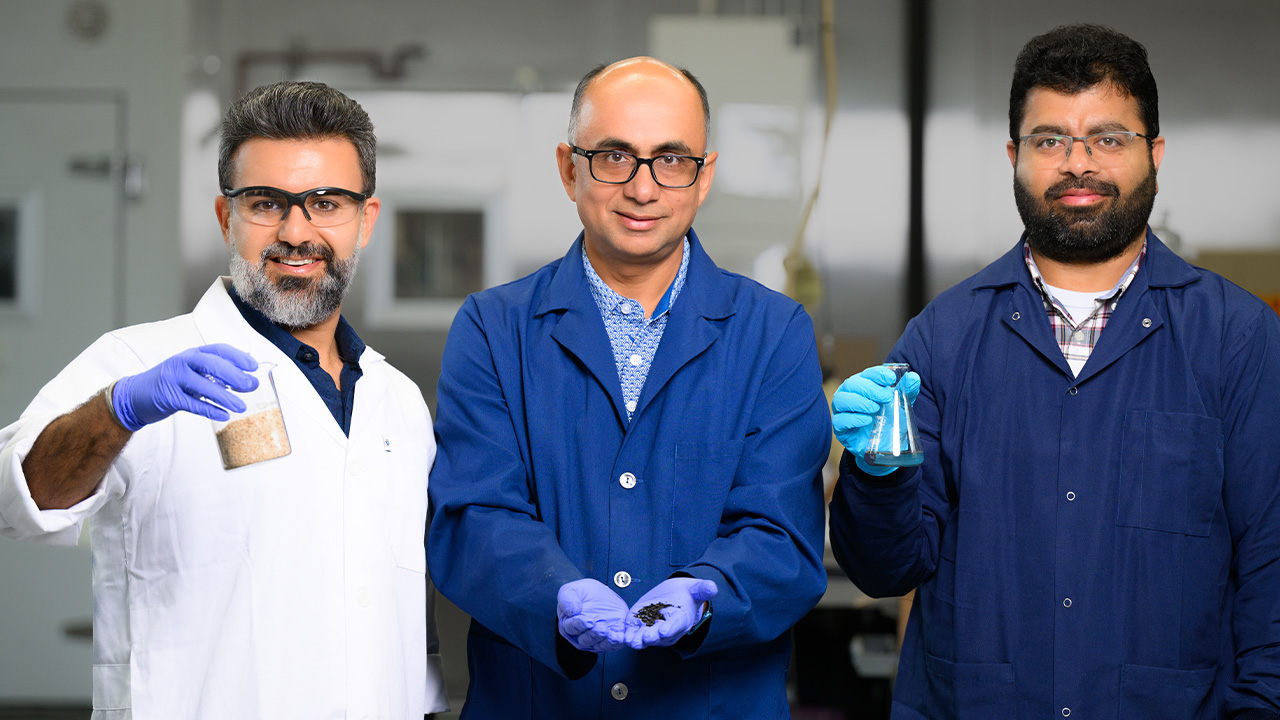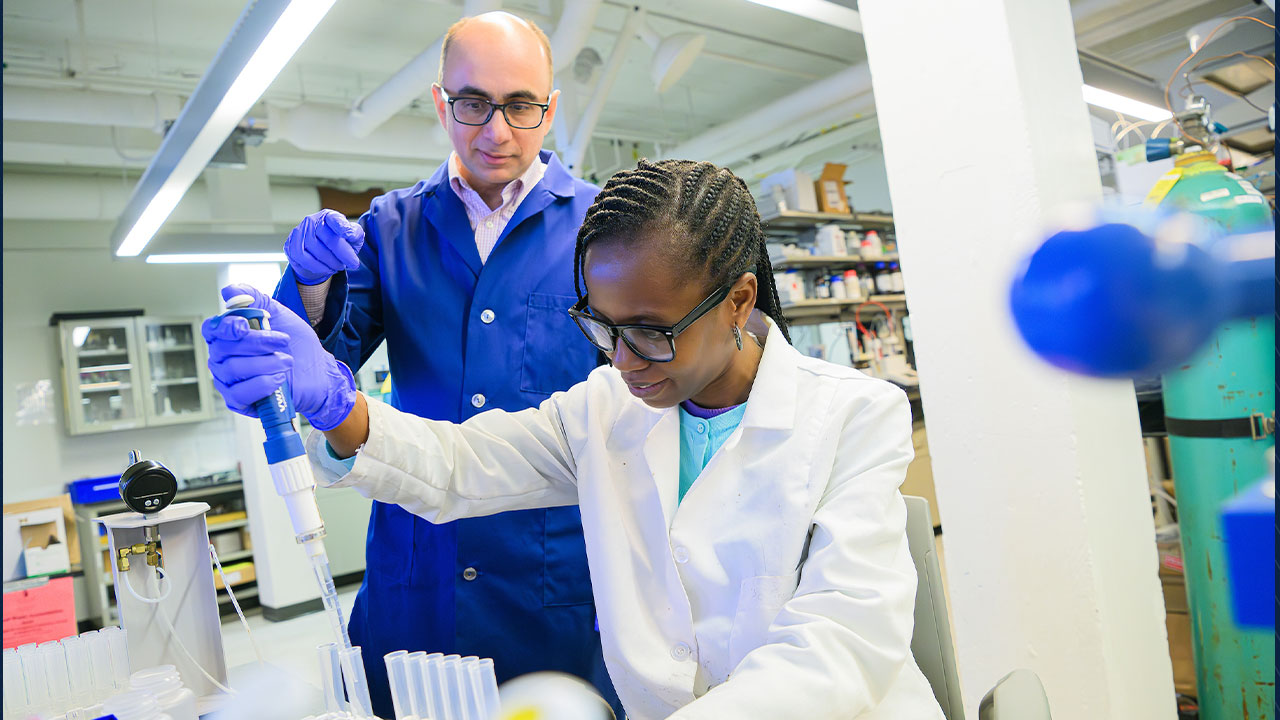content body
Imagine you own a farm, and after harvesting your crops, you’re left with piles of old corn cobs, peanut shells, cotton husks and plant waste. What if burning that waste at a high heat could help you grow more crops and increase profits?
That’s not a hypothetical, it’s reality; the charcoal-like substance left after burning plant waste — called biochar — has several uses that can help farmers improve soil quality and boost crop yields.
Auburn’s Center for Bioenergy and Bioproducts is on the cutting edge of rapidly advancing research on the potential uses of biochar. Sushil Adhikari, the center’s director and interim associate dean for research in the College of Agriculture, is excited about the direction of this work on campus.
“We are exploring the possibilities of biochar that can be produced from locally available biomass,” Adhikari said. “We are looking at the potential for capturing nutrients, reusing them and generating revenue for farmers to store carbon for large carbon dioxide emitters.”
At the center, faculty members from several disciplines, including those in agriculture, the College of Forestry, Wildlife and Environment and the Samuel Ginn College of Engineering, are currently studying how this naturally derived substance can be used in various facets of life.
Creating biodegradable plant containers
Nurseries and garden centers sell billions of dollars worth of potted plants each year, and the containers those plants are grown in can take hundreds of years to decompose in landfills. But what if those pots were made with biochar instead of plastic?
In one recent study, Adhikari and his colleagues explored how using biochar in the production of plastic plant containers allows them to decompose faster. They looked at pots manufactured with a combination of biochar and PLA, a plant-based plastic, and tested whether the addition of other ingredients, including a plasticizer called STRUKTOL, polyethylene glycol and cork, made the containers stronger while remaining biodegradable. They found cork to be the best additive.
Adhikari, who is currently overseeing nearly a dozen different studies on the uses of biochar, and his colleagues are testing the biochar-blended containers in greenhouses on campus. They are working with multiple plant container manufacturers to bring this technology to the market in the near future.

Jasmeet Lamba, an associate professor in biosystems engineering, is studying how biochar can remove contaminants from various water sources.
Cleaning drinking water
In Alabama and other parts of the U.S., high levels of contaminants in surface and groundwater can cause harm to both humans and aquatic life.
Jasmeet Lamba, an associate professor in biosystems engineering, is studying how biochar can remove contaminants from various water sources. He recently tested the use of biochar in removing arsenic and phosphorus from water and found that engineered biochar is highly effective.
While biochar-based filters are currently available on the market, Lamba is hoping to see their use become widespread to improve the quality of both surface water and groundwater and to ensure that drinking water is safe.
Farmers can also benefit by using biochar filters to retain valuable nutrients in soil, including phosphorus and nitrogen, and prevent their loss in runoff.
“As part of a National Science Foundation-funded research project, we have ongoing field experiments where we are quantifying how biochar can help improve water quality, soil health and crop yield,” Lamba said.

Hossein Jahromi, assistant professor in biosystems engineering, recently published a study on how biochar can break methane gas into clean hydrogen fuel and solid carbon.
Making clean fuel to power vehicles, factories and more
We all need fuel — to drive, travel, power infrastructure and heat and cool our homes. And we have a lot of methane gas on earth, generated by livestock, landfills, agricultural waste and more. So, what if we could transform methane into fuel?
That’s exactly what Auburn researchers are doing as they study ways to create clean hydrogen fuel by using biochar to break down methane gas.
Hydrogen fuel, which is already used in cars, trains and planes, doesn’t emit any smoke or pollution. Hossein Jahromi, assistant professor in biosystems engineering, recently published a study on how passing methane over hot biochar can break the gas down into two parts: clean hydrogen fuel, a precursor for liquid hydrocarbon fuels, and solid carbon.
The carbon can then be upcycled into a high-value element used in printer cartridge inks, electrical conductors, supercapacitors and even lithium-ion batteries.
While this technology is still in development, the vision is bold: Jahromi pictures modular reactors deployed to farms, food processors and even rural communities, where they will turn organic waste into clean hydrogen, right where it’s needed.
“This isn’t just about fuel,” Jahromi said. “It’s about designing circular solutions that work for the environment, the economy and everyday people. We can create clean energy from waste. That’s the kind of future Auburn is helping to build.”








